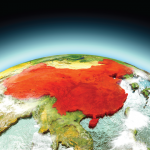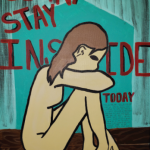Revelation
Who is the true creator of the N95 mask? Whose contribution was the most important? Was it Wu Lien-Teh, who single-handedly conquered an epidemic and created a mask that helped save many lives during the last pandemic? Or was it Sara Little Turnbull, who saw the great potential of non-woven materials and created a design that is now recognizable worldwide as an N95 mask?
I hope by this time you realize that, as with the story of mechanized flight, being first doesn’t really matter. With so many heartening stories surrounding the genesis of the N95 mask, it seems stingy to assign credit to just one person.
Sara Little Turnbull went on to work for multiple companies, including General Mills, DuPont, Ford, Pfizer, Revlon and Motorola, as well as for the National Aeronautics and Space Administration (NASA). At each company, she pioneered the concept of human-centered design, in which each stage of development is asked to address how the end product can best serve the consumer. She also helped develop the concept of biomimicry, in which designers turn to nature for solutions to human problems. Her work contributed to the design of housewares, medication delivery systems, cosmetics, furniture, toys, cleaning products, car interiors and space suits.7
Wu is revered throughout China and Malaysia, where multiple statues of him honor his contributions to public health. He founded the Chinese Center for Disease Control and Prevention, and continued to work productively well into his 80s. His work continues to be important, even today: In 2003, Singapore based its approach to severe acute respiratory syndrome (SARS) on Wu’s notes from 1910, which documented his approach to containing the Manchurian plague.15
Unlike the Wright brothers, Turnbull and Wu had to combat sexism and racism. Wu’s contributions were immediately discounted because of his race. Turnbull’s contributions, on the other hand, were stifled by an environment that relegated women to womanly duties. It’s hard not to wonder how much more both could have contributed if they were not simultaneously fighting for their place in society. It’s also hard not to wonder whether racism and sexism may explain why many of you had not heard of their remarkable contributions to modern medicine, until today.
As an experiment, close your eyes. Imagine that you’re looking at the true inventor of the N95 mask. You probably saw the face of a white man. Just something to think about.
I doubt either Turnbull or Wu would have spent much time contemplating that last point. The story of the N95 mask is not the story of firsts. It is the story of two brilliant, creative thinkers who dedicated their lives to improving the lives of others. More than their peers, they sought to grow and to stretch beyond the narrow roles defined for them by society. At the end, the true moral of their stories is the importance of stretching beyond expectations. As Ms. Turnbull famously said, “If you don’t stretch, you don’t know where the edge is.”16


